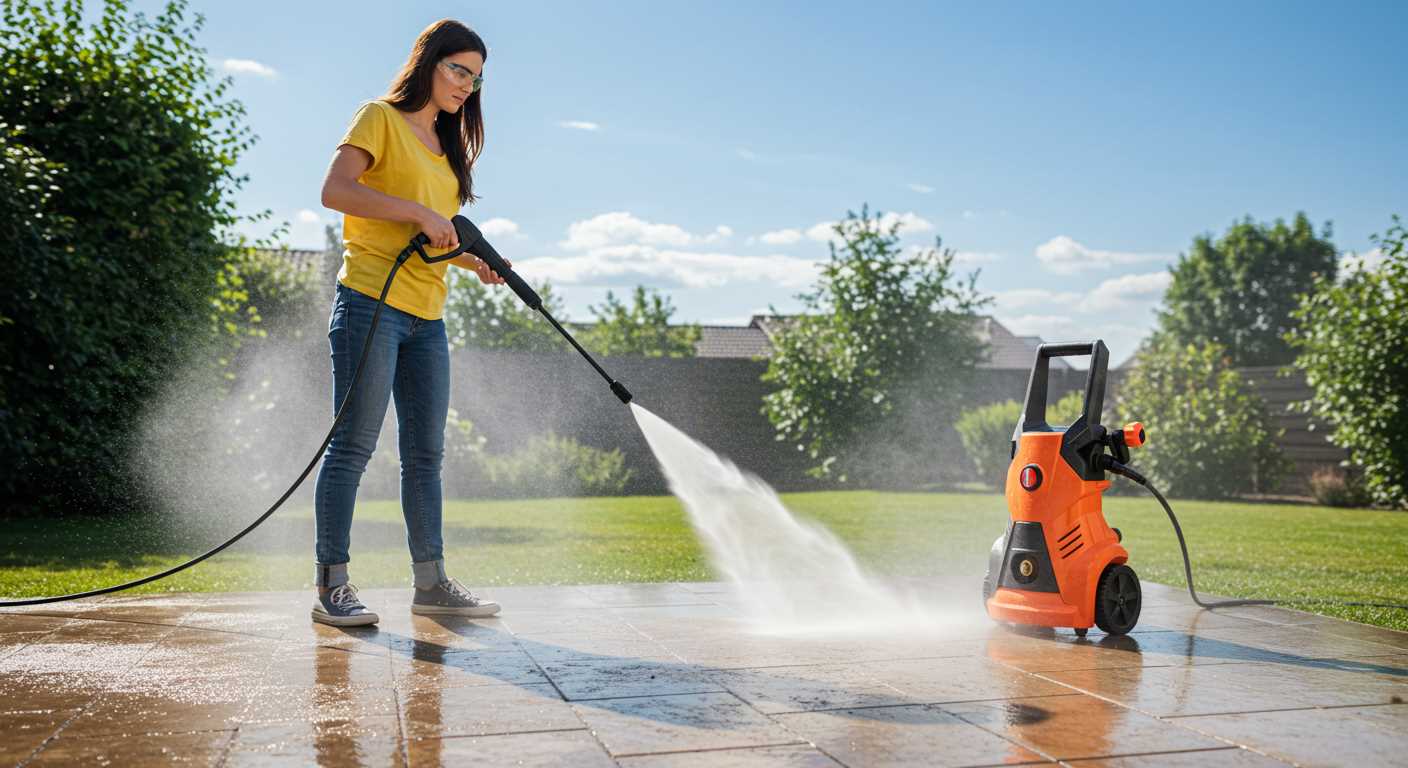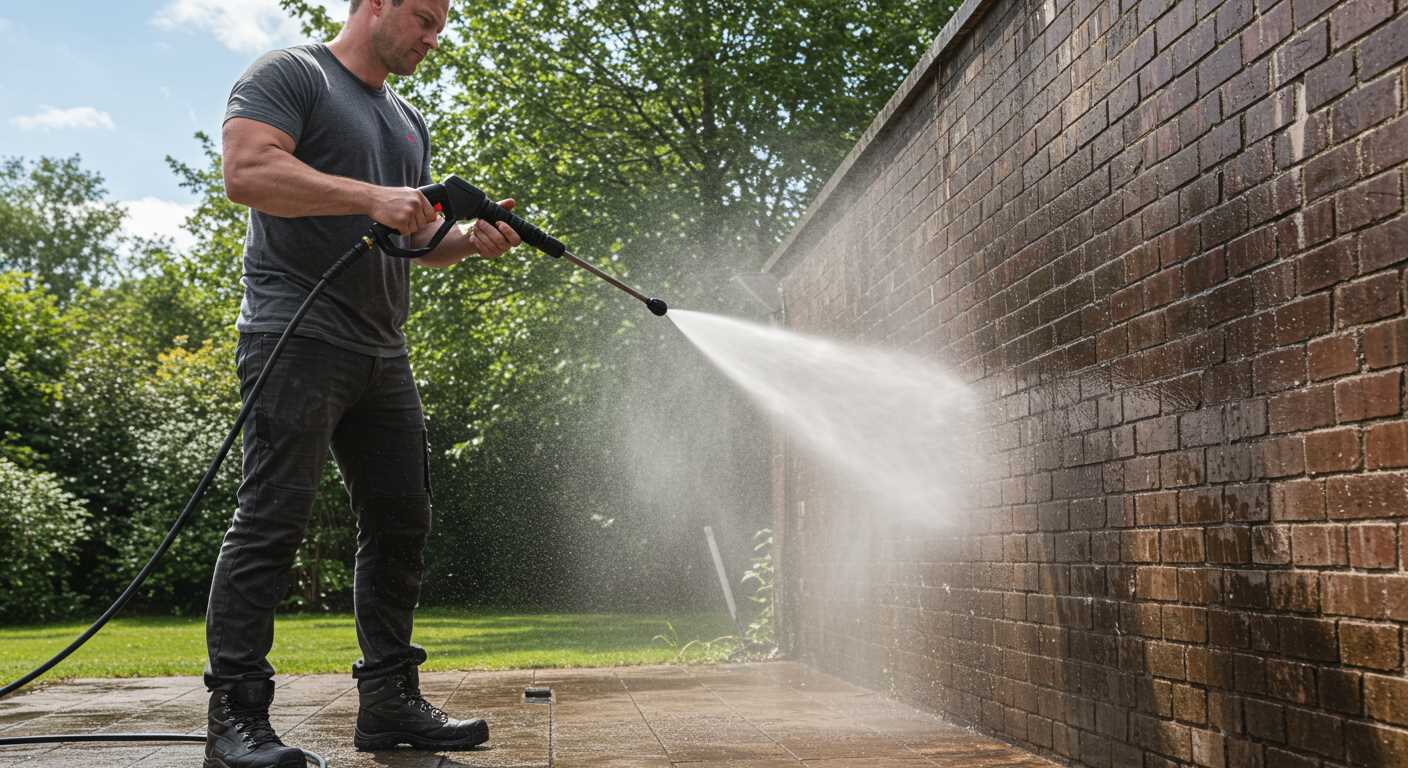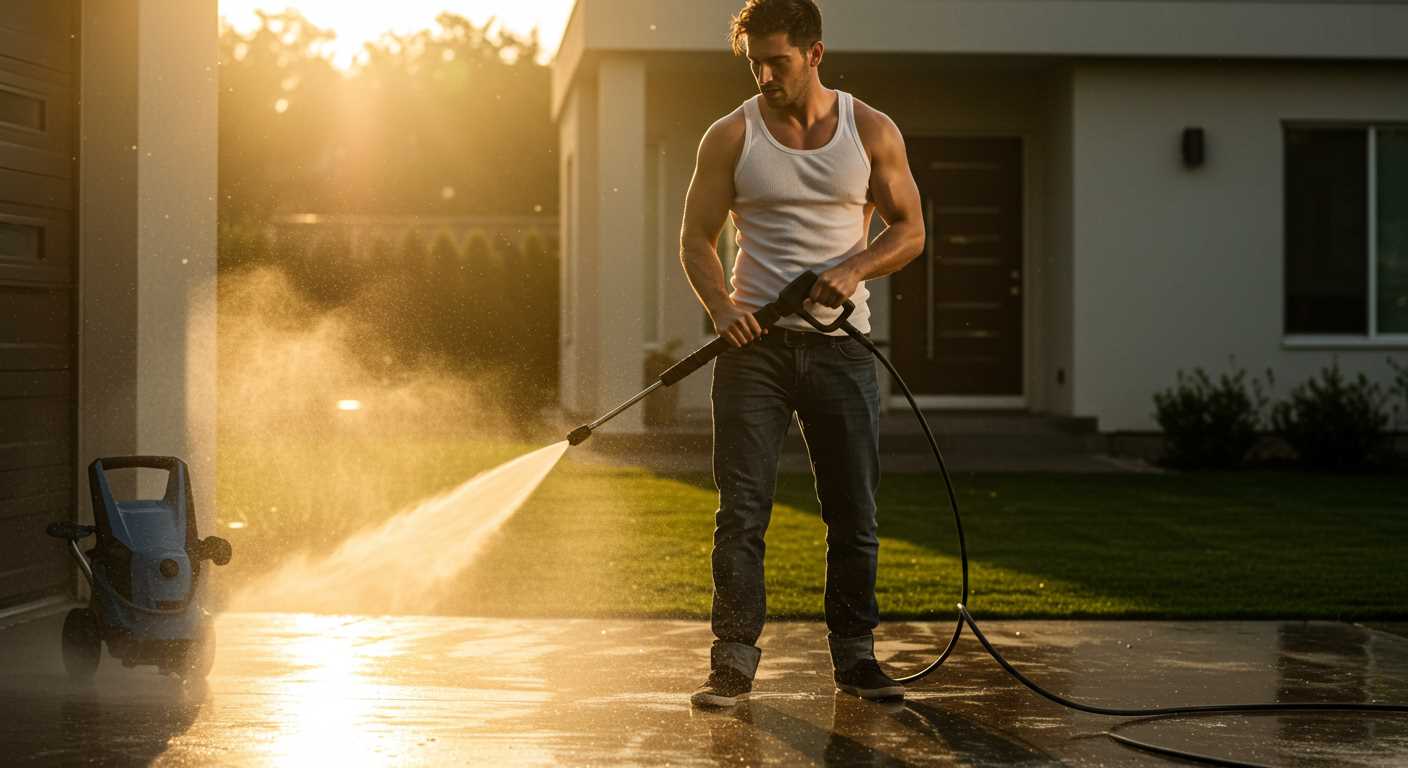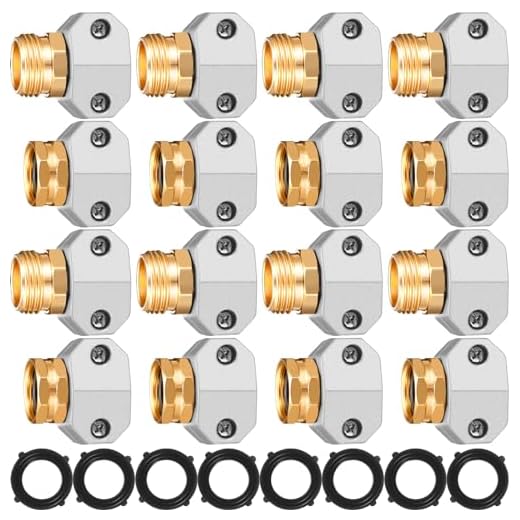



Choosing a hose for high-pressure cleaning requires careful attention to specifications and design, as not every variant is created with the same materials or functionality in mind. While many may appear similar at first glance, differences in diameter, construction, and temperature tolerance can significantly impact performance and durability.
For example, hoses typically range from 1/4 inch to 3/8 inch in diameter. A narrower diameter often means less flow rate, which can be a disadvantage in achieving optimal cleaning. Consider the length as well; longer hoses reduce pressure as the distance increases. It’s crucial to select a length that balances reach and pressure retention for your cleaning tasks.
Material plays a pivotal role as well. Reinforced rubber hoses offer higher resilience against kinks and abrasions, making them suitable for rugged use. In contrast, PVC may be lighter but less durable over time. Always evaluate your intended usage scenario to determine which material aligns best with your needs.
Moreover, temperature ratings must align with your cleaning requirements. Many hoses can handle up to 60°C, while some are designed for hot water applications, with ratings above that threshold. Using a hose with an inadequate temperature tolerance can lead to premature failure, which is an expense best avoided.
Investing in the right type can elevate your cleaning experience, ensuring efficiency and longevity. Assess the specifications carefully and choose a product that meets your particular demands–this will enhance not only performance but also satisfaction in your tasks.
Are Pressure Washer Hoses Uniform?
No, they differ significantly in various aspects. Length, diameter, material, and pressure ratings contribute to these variations. Selecting the right one for your machine is critical for performance and safety.
For instance, lengths typically range from 15 to 50 feet. A longer option offers extended reach but can reduce pressure, while a shorter one maintains intensity. Always consult your device’s manual to match compatible lengths.
Diameter also matters; most options come in 1/4-inch or 3/8-inch sizes. Larger diameters facilitate higher flow rates, beneficial for tougher tasks. Ensure your model supports the diameter you choose.
Materials vary too. Rubber hoses are durable and resist kinks, while PVC is lightweight and affordable but may wear out faster. The choice often depends on frequency of use and storage conditions.
Additionally, pressure ratings must align with your machine’s specifications. Using a hose not rated for your unit’s output can lead to ruptures or dangerous backpressure.
Lastly, connectors can differ. Ensure compatibility with your equipment to avoid leaks and functional issues. Adaptors are available if necessary.
In summary, understanding these differences is essential for selecting the right hose, thereby enhancing your cleaning experience.
Understanding Hose Material Differences
Choosing the correct material significantly impacts performance and durability. Here’s a breakdown of common materials used in these components.
Polyurethane
Lightweight and flexible, polyurethane options are ideal for residential tasks. They resist abrasion and kinks, which makes them easy to handle. However, they may not withstand high temperatures as effectively as other materials.
Rubber
Rubber components offer superior durability and heat resistance, making them suitable for commercial use. They are less prone to cracking in colder weather but are heavier and may require more storage space.
Vinyl

Vinyl options are generally the most affordable but lack the strength and durability of polyurethane and rubber. They perform well in light-duty applications but can deteriorate faster under high pressure or extreme temperatures.
| Material | Durability | Weight | Flexibility | Temperature Resistance |
|---|---|---|---|---|
| Polyurethane | Medium | Light | High | Medium |
| Rubber | High | Heavy | Medium | High |
| Vinyl | Low | Light | High | Low |
Selecting the right material enhances your setup’s efficiency and longevity, ensuring you get the best performance for your specific needs. Always consider the type of projects you’ll undertake to determine the most suitable option.
Identifying Compatibility with Your Pressure Washer

To ensure optimal performance, matching the correct length, diameter, and connection type of your cleaning tool’s tubing is critical. Begin by checking the user manual for specifications regarding compatible tubing sizes and connectors. Most brands include detailed information regarding compatible accessories.
Measuring the diameter of your existing connection point will provide valuable insight. A mismatch in diameter can lead to attachment issues or decreased water flow. Typically, standard sizes range from ¼ inch to ⅜ inch; knowing the exact measurement can save time and hassle.
Connection types vary significantly among manufacturers. Quick-connect systems are quite common, while threaded connections may require additional adapters. Observing the connector style on your current set-up will guide you in selecting a compatible alternative. Common fittings include M22 and NPT threads, so verifying this aspect is paramount.
Length affects usability and manoeuvrability. Assess your cleaning tasks; for extensive areas, a longer tube may be beneficial, while a shorter one aids in storage and ease of handling. Balancing these factors can improve your cleaning experience.
Finally, compatibility extends to the nozzle and wand system as well. Ensure that any attachments you intend to use are designed to fit your model, as this will maximise your cleaning capabilities and maintain device integrity.
Evaluating Hose Length and Its Impact on Performance
Choosing an appropriate length for your cleaning accessory can significantly influence operational effectiveness. Generally, lengths range from 20 to 100 feet, and each has specific advantages and drawbacks that should be considered based on your cleaning tasks.
Short Hoses
- Optimal for tackling small areas or tasks that require quick manoeuvrability.
- More manageable and lighter, making them easier to store and transport.
- Less pressure drop, ensuring maximum force at the nozzle, ideal for tough grime.
Long Hoses
- Necessary for larger spaces or when distance from the water source is considerable.
- Exert greater wear, which may result in kinks or tangling over time.
- Potential for reduced effectiveness due to pressure loss over extended lengths.
To mitigate issues with longer lengths, consider adding a pump or a higher PSI unit, which can compensate for any loss in force. Testing different hose lengths in your specific settings is beneficial, as it provides firsthand insight into how hose length interacts with your cleaning needs.
Furthermore, always factor in storage capabilities, as longer hoses can require more space. Investing in a quality hose reel can alleviate storage concerns and prolong the lifespan of your equipment.
In conclusion, selecting the right length directly correlates with your cleaning objectives. Evaluate the areas you plan to clean and adjust your hose choice accordingly for optimal performance.
Examining Pressure Ratings and Their Importance

Opt for hoses with pressure ratings that match or exceed your cleaning device’s maximum output. A minimum of 3,000 PSI is advisable for heavy-duty tasks. Using hoses rated lower than your equipment can lead to ruptures and unsafe conditions.
Inspect the PSI and GPM (gallons per minute) ratings listed by the manufacturer. These metrics directly affect performance capabilities–higher GPM generally results in better cleaning efficiency. Always consult your user manual to determine the appropriate specifications that align with the device.
Consider hoses featuring safety certifications. Hoses with UL (Underwriters Laboratories) or similar ratings ensure they have undergone rigorous testing to guarantee reliable performance. Investing in certified products provides assurance of longevity and safety.
Keep in mind that environmental factors may impact ratings over time, particularly when hoses are exposed to heat or UV radiation. Regular inspection for signs of wear or damage helps maintain optimal function and safety standards. Replace any components that show signs of deterioration immediately.
Exploring Nozzle Compatibility with Various Hoses
To achieve optimal performance, ensure that the nozzle fits correctly with the selected tubing. Compatibility can vary significantly between different brands and models. Generally, the most common fitting sizes are ¼ inch and ⅜ inch. Verify the connection type of your nozzle and match it to the hose accordingly.
Nozzle Types and Their Uses
Diverse nozzles serve distinct cleaning needs. For instance, a zero-degree nozzle releases a concentrated, high-pressure jet ideal for removing stubborn dirt, while a 40-degree wide spray is better suited for gentle cleaning tasks. Check that your chosen attachment is compatible with the internal diameter of your tubing, as this affects the flow and pressure.
Adapter Options
If you encounter size mismatches, consider purchasing adapters. These are widely available and can bridge incompatible connections, allowing you to use a preferred nozzle with various hoses. Always confirm that these adapters are rated for the pressure and flow of your equipment to prevent any failures.
In testing different configurations, I’ve found that maintaining the manufacturer’s specifications maximises efficiency. Deviating from these can lead to subpar results or damage to components. Make adjustments cautiously and monitor performance closely.
Maintenance Tips for Different Types of Pressure Washer Hoses
Always inspect connections for wear and tear. Rubber or vinyl types should fit snugly to prevent leaks. If you notice any signs of fraying or damage, replace the connection immediately.
Storage Recommendations
Store your tubing in a cool, dry place away from direct sunlight. Avoid coiling tightly; instead, use a hose reel or figure-eight pattern to prevent kinks and maintain flexibility.
Cleaning Techniques
Periodically clean your tubing using soapy water and a soft brush. Rinse thoroughly to remove any residue. For stubborn grime, a mild cleaner may be necessary. Avoid harsh chemicals that can degrade the material.
Test for leaks by running water through the hose. If you find any, use a hose repair kit to seal small leaks or replace the damaged section. Regular testing can extend the lifespan of your equipment.
FAQ:
Are all pressure washer hoses compatible with any model?
No, pressure washer hoses are not universally compatible with all models. Each pressure washer has specific requirements regarding hose diameter, length, and connection type. It is important to check the manufacturer’s specifications for your particular model to ensure compatibility. Using an incorrect hose may lead to reduced performance or potential damage to the pressure washer.
What are the main differences between pressure washer hoses?
The main differences between pressure washer hoses include material, diameter, length, and pressure rating. Hoses can be made from materials like PVC, rubber, or polyurethane, affecting their durability and flexibility. The diameter influences the flow rate, while the length directly affects your reach and portability. Additionally, each hose has a specific pressure rating, so selecting one that matches or exceeds your pressure washer’s rating is crucial for safe operation.
How do I choose the right pressure washer hose for my needs?
Choosing the right pressure washer hose involves considering several factors. First, assess the pressure rating of your washer and ensure any hose you select can handle it. Consider the length of hose you need based on your cleaning tasks—longer hoses offer greater reach but can lower the water pressure. Lastly, think about the material; rubber hoses are more durable but can be heavier, while PVC hoses are lighter but may not be as long-lasting. Evaluating these factors will help you find a hose that suits your cleaning requirements.
Can I use a lower-rated hose with my high-pressure washer?
Using a lower-rated hose with a high-pressure washer is not advisable. Hoses are rated for maximum pressure, and using one that cannot handle your washer’s output can result in leaks or bursts. This poses safety risks, not to mention potential damage to your equipment. Always use a hose that meets or exceeds the maximum pressure rating of your pressure washer for safe and effective use.
How can I maintain my pressure washer hose to prolong its life?
To maintain your pressure washer hose, start by properly coiling it after each use to prevent kinks or damaging bends. Store it in a cool, dry place away from direct sunlight to avoid deterioration of materials. Regularly inspect the hose for any signs of wear, such as cracks or leaks, and replace any damaged sections promptly. Additionally, avoid dragging the hose across rough surfaces during use, as this can cause abrasions. Following these steps will help you extend the life of your hose.











